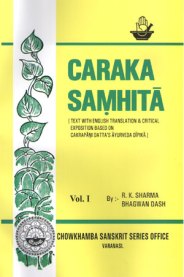 Ayurveda is the ancient Indian medical tradition pertinent to a holistic perspective of man, his health, and illness over the span of his lifetime and the course of existence that is believed to come thereafter. Ayurveda is founded on an mystical, yet practical, set of guidelines that establish and maintain inner equilibrium and accord, both of which are essential in ensuring an opulent human life. Acting in accordance with Ayurvedic regulations and stipulations will ensure one will have a prolonged life, which is considered by devout Hindus to be a valuable instrument for achieving dharma (righteousness), artha (wealth), and sukha (happiness) (Wink & Wyk 10).
Ayurveda is the ancient Indian medical tradition pertinent to a holistic perspective of man, his health, and illness over the span of his lifetime and the course of existence that is believed to come thereafter. Ayurveda is founded on an mystical, yet practical, set of guidelines that establish and maintain inner equilibrium and accord, both of which are essential in ensuring an opulent human life. Acting in accordance with Ayurvedic regulations and stipulations will ensure one will have a prolonged life, which is considered by devout Hindus to be a valuable instrument for achieving dharma (righteousness), artha (wealth), and sukha (happiness) (Wink & Wyk 10).
 The Caraka Samhita, dated at approximately 700 BC, became the first recorded text of Ayurveda,. The Caraka Samhita, which focuses on scientific medicinal theory, is the primary text to elucidate measures to be taken to prevent ailment and maintain health as well as theraputic procedures to treat and cure disease. The Caraka Samhita elucidates how the body, mind and soul of a patient are to be rejuvenated with the least possible invasion (Premila 2).
The Caraka Samhita, dated at approximately 700 BC, became the first recorded text of Ayurveda,. The Caraka Samhita, which focuses on scientific medicinal theory, is the primary text to elucidate measures to be taken to prevent ailment and maintain health as well as theraputic procedures to treat and cure disease. The Caraka Samhita elucidates how the body, mind and soul of a patient are to be rejuvenated with the least possible invasion (Premila 2).
The Susruta Samhita became the secondary recorded text of Ayurveda, and predominately addressed surgical procedures and human anatomy The Susruta Samhita describes practical surgery, prosthetic surgery, some cosmetic/plastic surgery, opthmathology, and midwifery meticulously. The description of surgical procedures, illnesses/pr ognoses, preparations of medications and remedies that are outlined in 184 chapters of the Susruta Samhita are outlined by modern medicine in advanced surgery (Premila 2). The Susruta Samhita gives an account of several methods that are presently used in surgical treatments and procedures: chedana, which describes how limbs are to be properly amputated; bhedana, which gives an account of how incisions are to be made; lekhana, which outlines how abnormal growths are to be removed from the body; and svana, which give details on how to put in stitches.
ognoses, preparations of medications and remedies that are outlined in 184 chapters of the Susruta Samhita are outlined by modern medicine in advanced surgery (Premila 2). The Susruta Samhita gives an account of several methods that are presently used in surgical treatments and procedures: chedana, which describes how limbs are to be properly amputated; bhedana, which gives an account of how incisions are to be made; lekhana, which outlines how abnormal growths are to be removed from the body; and svana, which give details on how to put in stitches.
The Ayurvedic medical literature composed in the sacred writ of both the Caraka Samhita and Susruta Samhita is oriented both practically and operationally. Mutually, the texts are presented in a symposium-like format in which a symptom is discussed in precise detail; practically classified and then properly contextualized in respect to the realms of syndrome and prognosis; and is ultimately dealt with therapeutically.
Works Cited
Premila, M.S.. Ayurvedic Herbs: A Clinical Guide to the Healing Plants of Traditional Indian Medicine. 1 ed. New York: Routledge, 2006. Print.
Wink, Michael, and Ben-Erik Van Wyk. Medicinal Plants of the World. Portland, OR: Timber Press, Incorporated, 2004. Print.